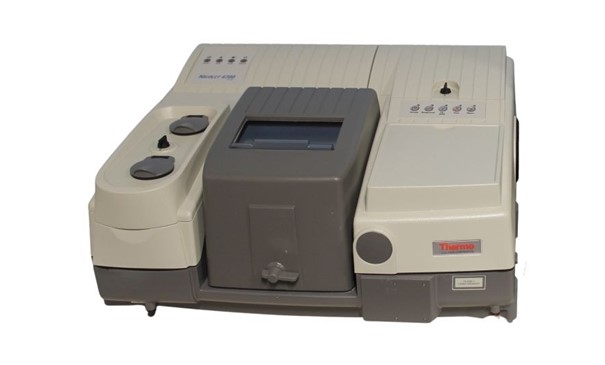Infrared (IR) spectroscopy is a powerful analytical technique that provides insight into the molecular structures and interactions within polymers. This method is based on the absorption of infrared radiation by molecules which leads to their vibrational excitation. The absorption pattern or spectrum is distinctive and serves as a "fingerprint" of the molecule, making infrared spectroscopy invaluable in the identification and characterization of polymeric materials. It offers rapid, non-destructive analysis, revealing a wealth of information about the polymer's molecular structure, interactions, and changes over time or under various conditions.
Infrared Spectroscopy of Polymers

Applications in Polymers:
- Identification: Since every polymer has a unique IR spectrum, this technique can be used to identify unknown polymers or to confirm the synthesis of a desired polymer.
- Characterization: The presence or absence of specific peaks can reveal details about molecular structure, degree of crystallinity, and potential side-groups or additives within the polymer.
- Study of interactions: IR can be used to study interactions between polymers in blends or composites, including hydrogen bonding or other intermolecular forces.
- Monitoring reactions: In situations like polymer cross-linking or degradation, IR can monitor the changes in functional groups, providing insights into reaction mechanisms.
Techniques:
- Transmission IR spectroscopy: Here, a thin film of the polymer is subjected to IR radiation, and the transmitted light is detected. This technique is traditional and provides a detailed spectrum but can be limited by the thickness and uniformity of the polymer film.
- Attenuated Total Reflectance (ATR) IR: This method uses a crystal to internally reflect the IR beam, allowing for the direct analysis of samples without the need for sample preparation. ATR-IR is especially useful for thicker and uneven samples.
- Specular Apertured Grazing Angle (SAGA) IR: This method was specifically developed to analyze thin films or monolayers on reflective surfaces, such as metals. To do this, the infrared beam is directed onto the sample surface at a very shallow, grazing angle. This allows for multiple reflections and increased path lengths through the sample, enhancing the sensitivity for thin films.
Fundamentals:
Infrared radiation falls between the visible and microwave portions of the electromagnetic spectrum. When IR radiation is passed through a sample, certain frequencies are absorbed by the sample, leading to vibrations of its molecules. These vibrations can be related to various molecular motions including stretching, bending, and twisting of bonds within the molecules. Polymers, being large macromolecules, have a myriad of such vibrational modes, and their IR spectra can provide a plethora of information about their structure and composition.
Publications:
- Klingenberg, P. et al., Quality comparison of plastic packaging waste from different separation systems: Result enhancement with non-negative matrix factorization of FTIR spectra, Waste Management, Volume 178, 2024, Pages 135-143, https://doi.org/10.1016/j.wasman.2024.02.020
- Bunjes, A. et al., Characterization and chemometric modelling of mechanically recycled polypropylene for automotive manufacturing, Polymer 249 (2022) 124823, https://doi.org/10.1016/j.polymer.2022.124823
- Fischer, J. et al., A novel class of high molecular weight multifunctional antioxidants for polymers based on thiol-ene click reaction, Polymer Degradation and Stability 173 (2020) 109099, https://doi.org/10.1016/j.polymdegradstab.2020.109099
 Fraunhofer Institute for Structural Durability and System Reliability LBF
Fraunhofer Institute for Structural Durability and System Reliability LBF